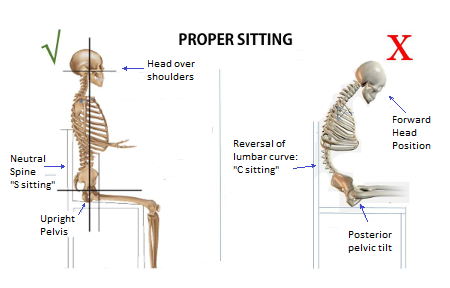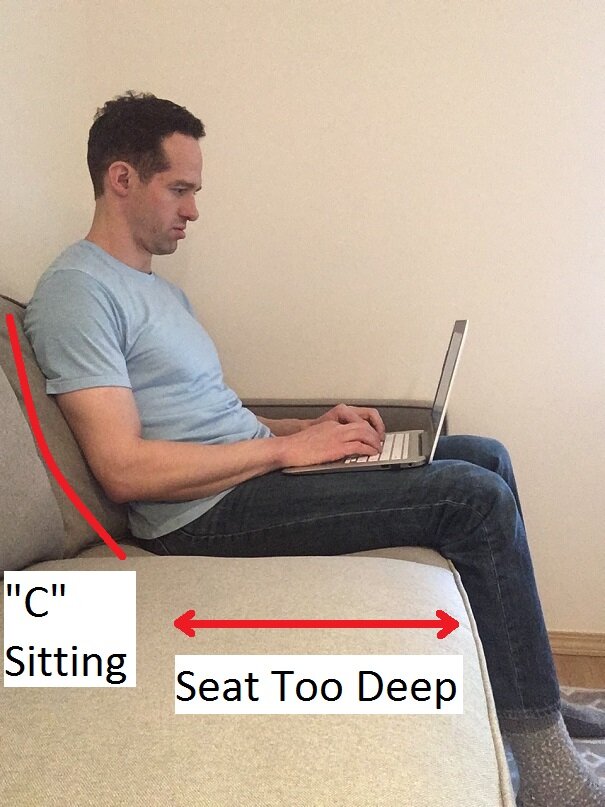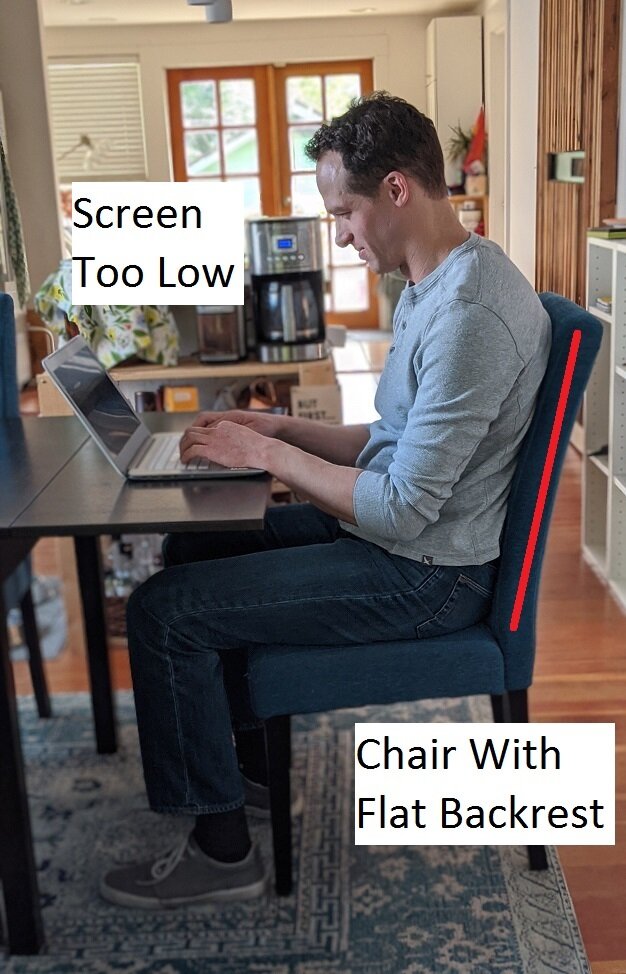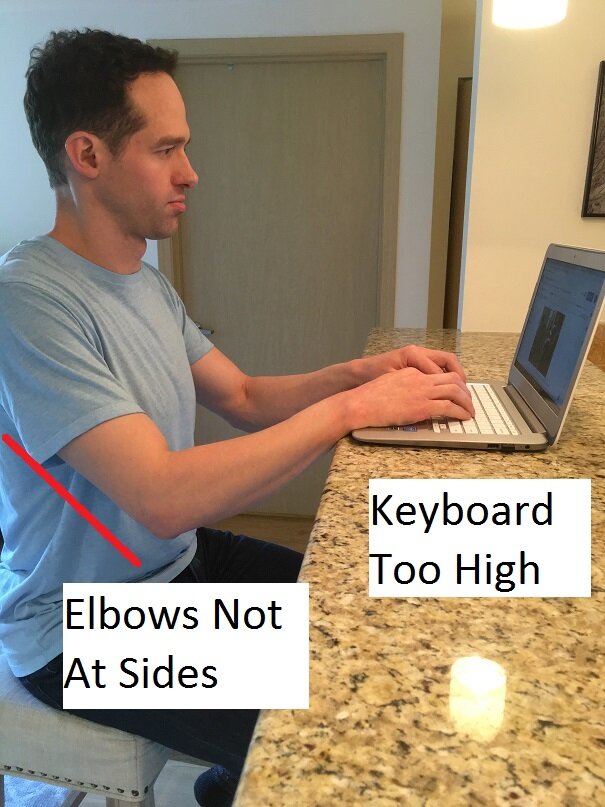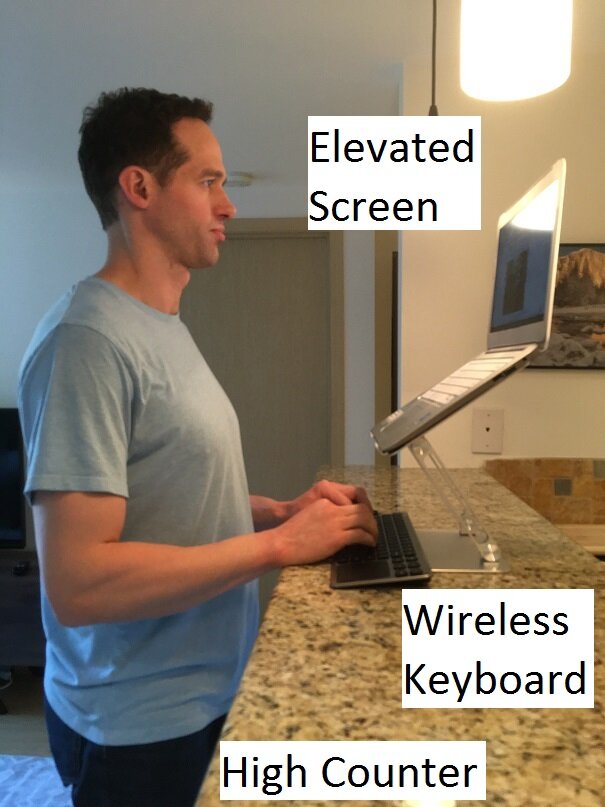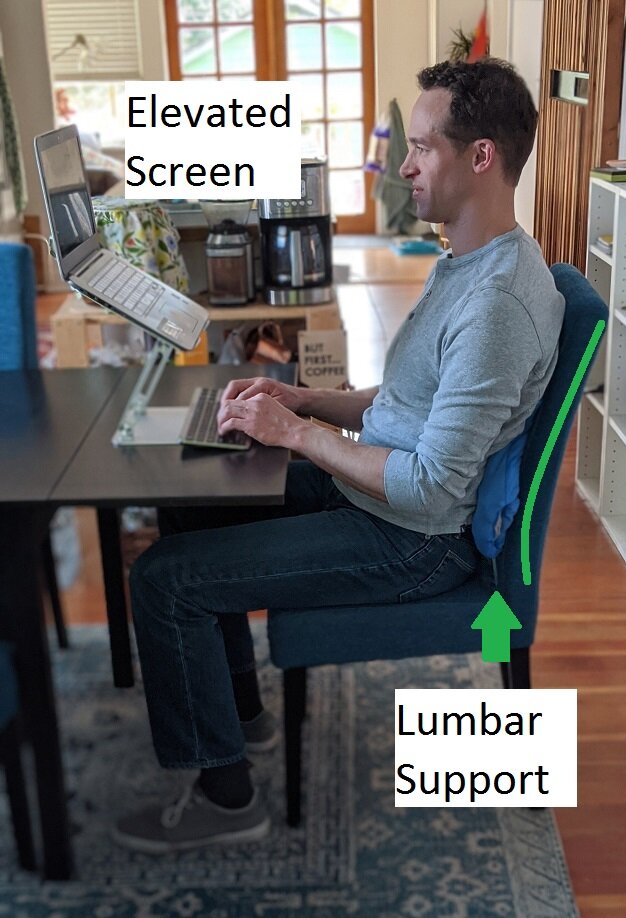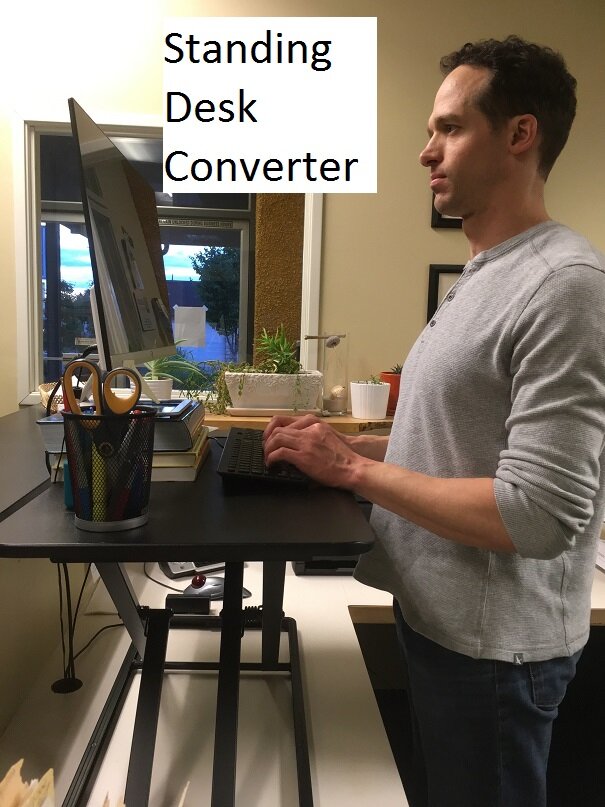WHY ARE ERGONOMICS IMPORTANT?
Historically, work injuries involved heavy lifting and repetitive manual tasks. Today, work injuries still occur, but they have a different cause. The office environment has changed the daily demands on our bodies, and the truth is that our bodies were never designed to sit for eight hours a day. Sitting poorly may initially only cause mild muscle pain, but sitting poorly for prolonged periods causes repeated stress to the same tissues in the body and can lead to soft-tissue injuries of the spine, shoulders, and other parts of the body. Studies have documented how lack of movement and sitting in slouched positions can lead to the development of chronic pain and injuries. With many office workers now spending more time working from home, it is even more important to fix our home office so we don’t develop overuse injuries.
IDEAL ERGONOMICS AT HOME
When working in a home office, our goal is to work in a way that minimizes stress on our bodies. There are two main things to consider to do this: (1) we should work in “neutral postures,” and (2) we should move and change positions frequently.
Let’s briefly explain these two concepts before going into specific examples. The first concept is “neutral postures.” The picture above on the left shows a “neutral” sitting position. This person is sitting with a “neutral spine,” which is when the low back (or lumbar spine) maintains its natural “S” curve. Also note that the head is over the shoulders and the elbows are resting at the sides.
A second very important concept is to keep moving. Even if you are maintaining a good posture, staying in one position for a long time puts prolonged stress on the same tissue in your body. Altering your position changes how your body is loaded and distributes stress evenly.
COMMON PROBLEMS
A few common problems lead to a lot of the typical overuse injuries that office workers experience. Here are a few things to look out for:
Slouched Sitting: Sitting slouched or “C” sitting reverses the normal curvature of the lumbar spine and can put stress on the spine that causes low back pain if this position is maintained for a long time. This problem is caused by chairs with flat backs and deep seats (like couches).
Forward Head Posture: When we sit with our head in front of our shoulders, it substantially increases the loading on our neck and can lead to neck and shoulder pain. Working off of a low laptop or having difficulty reading small fonts on the screen can cause this.
Reaching: Our elbows should be at our sides. Reaching forward for a keyboard or mouse causes neck and shoulder pain if you do it for too long.
FIXES FOR COMMON PROBLEMS
Here are some quick fixes for some of the common problems:
Slouched Sitting: When sitting we need to maintain an “S” curve in the spine. If you are sitting in a chair with a flat backrest, add a pillow or a commercial lumbar support that supports the low back. Deep seats like a couch will cause you to slouch and should be avoided. In general, sitting puts increased pressure on the low back, so even with good support you shouldn’t sit all day. Alternate between sitting and standing, or try sitting semi-reclined which is less stressful on the low back than sitting upright.
Forward Head Posture: The top of your computer screen should be at the same height as your forehead. Don’t work directly off your laptop because you will have to lean over to see it. Instead, try using a laptop stand to elevate your laptop screen to the right height. If you can’t see the screen without leaning forward, make the font bigger or use glasses so that you can see easily.
Reaching: When you are using the keyboard and mouse, your elbows should be relaxed at your sides with a 90 degree bend. If you use a laptop stand, you will also need to get a wireless keyboard as well to keep your elbows at your sides. If you work at a desk and still reach for your keyboard, you may need to install a keyboard tray to bring the keyboard and mouse closer to you.
Move Frequently: This is the most important point for your home office. If you stay in the same position all the time it will put stress on the same tissue in your body, and eventually something will break down. Move every 20-30 minutes. Try to switch between sitting, standing, and semi-reclined positions to do your work.
MAKING CHANGES
See if you can tell what is causing you to sit poorly and start making some changes to your home office. Make the cheap changes first and see if they help. If you are spending a lot of time working at home you may eventually want to invest in a better workstation. Here are some links to the recommended ergonomic items from this blog:
If you have questions, don’t hesitate to ask utilizing the “Ask A PT” feature on our website. We can also set up a remote ergonomics assessment if needed. Good luck getting your home office set up!
REFERENCES
De Carvalho D, Grondin D, Callaghan J. The impact of office chair features on lumbar lordosis, intervertebral joint and sacral tilt angles: a radiographic assessment. Ergonomics. 2017; 60(10):1393-1404.
Nachemson ALF. Towards a Better Understanding of Low-Back Pain: A Review of the Mechanics of the Lumbar Disc. Rheumatology. 1975; 14(3):129-143.
Womersly L, May S. Sitting Posture of Subjects With Postural Bachache. Journal of Manipulative and Physiological Therapeutics. 2006; 29(3):213-218.
Yasukouchi A, Isayama T. The Relationships between Lumbar Curves, Pelvic Tilt, and Joint Mobilities in Different Sitting Postures in Young Adult Males. Applied Human Science. 1995; 14(1):15-21.

